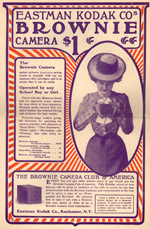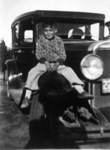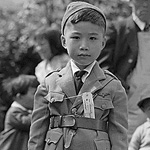Beyond Google Searching
Question

Where can I find good digital images of U.S. History? Are there any good search engines or websites? Google is what I use, but it is less than wonderful. Lots of stuff that is not relevant or usable.
Also, what about copyright? If I understand it, I can use copyrighted images for my own classes, but not share with others.
Answer
There is a seemingly endless supply of digital images online related to U.S. history, but as you note, finding high quality, reliable images quickly is often a challenge. One place to start is right here on teachinghistory.org! You can search or browse more than 1,000 Website Reviews to locate resources on specific topics, time periods, or keywords. The websites in this collection have been reviewed for quality, content, and accessibility. Websites should let you know what you’ll find on each site, from texts and images to audio and video.  See, for example, the review of American Indians of the Pacific Northwest. The review tells you who created the site (the Library of Congress and University of Washington Libraries) as well as what you’ll find: “more than 2,300 photographs and 7,700 pages of text illustrating the everyday lives of American Indians in the Northwest Coast and Plateau regions of the Pacific Northwest,” including housing, clothing, crafts, transportation, education, and work.
See, for example, the review of American Indians of the Pacific Northwest. The review tells you who created the site (the Library of Congress and University of Washington Libraries) as well as what you’ll find: “more than 2,300 photographs and 7,700 pages of text illustrating the everyday lives of American Indians in the Northwest Coast and Plateau regions of the Pacific Northwest,” including housing, clothing, crafts, transportation, education, and work.  Or learn about Densho: The Japanese American Legacy Project. This website offers “more than 750 hours of video interviews and 10,000 historic images focused on first-hand accounts of Japanese Americans unjustly incarcerated by the U.S. government during World War II.” The review also mentions specific teacher resources for grades 4–12.
Or learn about Densho: The Japanese American Legacy Project. This website offers “more than 750 hours of video interviews and 10,000 historic images focused on first-hand accounts of Japanese Americans unjustly incarcerated by the U.S. government during World War II.” The review also mentions specific teacher resources for grades 4–12.
There are two basic answers to your question on copyright. Materials that are in the public domain are no longer covered by copyright restrictions (summarized here: Copyright Term and the Public Domain in the United States). You are free to use those materials in your classroom, to reproduce them, and hand them out to students. Anything created before 1923 is in the public domain and there are many resources in this category available online, from the more than 1,000 Civil War photographs by Matthew Brady and others to the more than 3,500 glass plate negatives from the Solomon Butcher photograph collection depict everyday life in central Nebraska in Prairie Settlement: Nebraska Photographs and Family Letters. Or the 9,000 advertising items and publications dating from 1850 to 1920 that illustrate the rise of consumer culture in America from the mid-19th century on Emergence of Advertising in America: 1850–1920. Here are a few other excellent resources for copyright-free images:
- National Archives, Archival Research Catalog (ARC)
- ** Basic search ** Digital copies only
- Library of Congress Digital Collections
- Flickr Creative Commons
- New York Public Library Digital Gallery
- Morgue File
For material protected by copyright, the law allows certain exceptions, known as “fair use,” and many classroom uses fall into this category. There are four factors to consider in determining whether or not a particular use is fair:
- The purpose and character of the use, including whether such use is of commercial nature or is for nonprofit educational purposes.
- The nature of the copyrighted work.
- The amount and substantiality of the portion used in relation to the copyrighted work as a whole.
- The effect of the use upon the potential market for, or value of, the copyrighted work.
According to the U.S. Copyright office: “The 1961 Report of the Register of Copyrights on the General Revision of the U.S. Copyright Law cites examples of activities that courts have regarded as fair use. . . [including] reproduction by a teacher or student of a small part of a work to illustrate a lesson.” You can learn more about copyright basics from the U.S. Copyright Office or through their publication on Copyright Basics. The University of Minnesota’s Fair Use Checklist might also be helpful for determining fair use in your classroom. See also: Historic Images are Everywhere.
